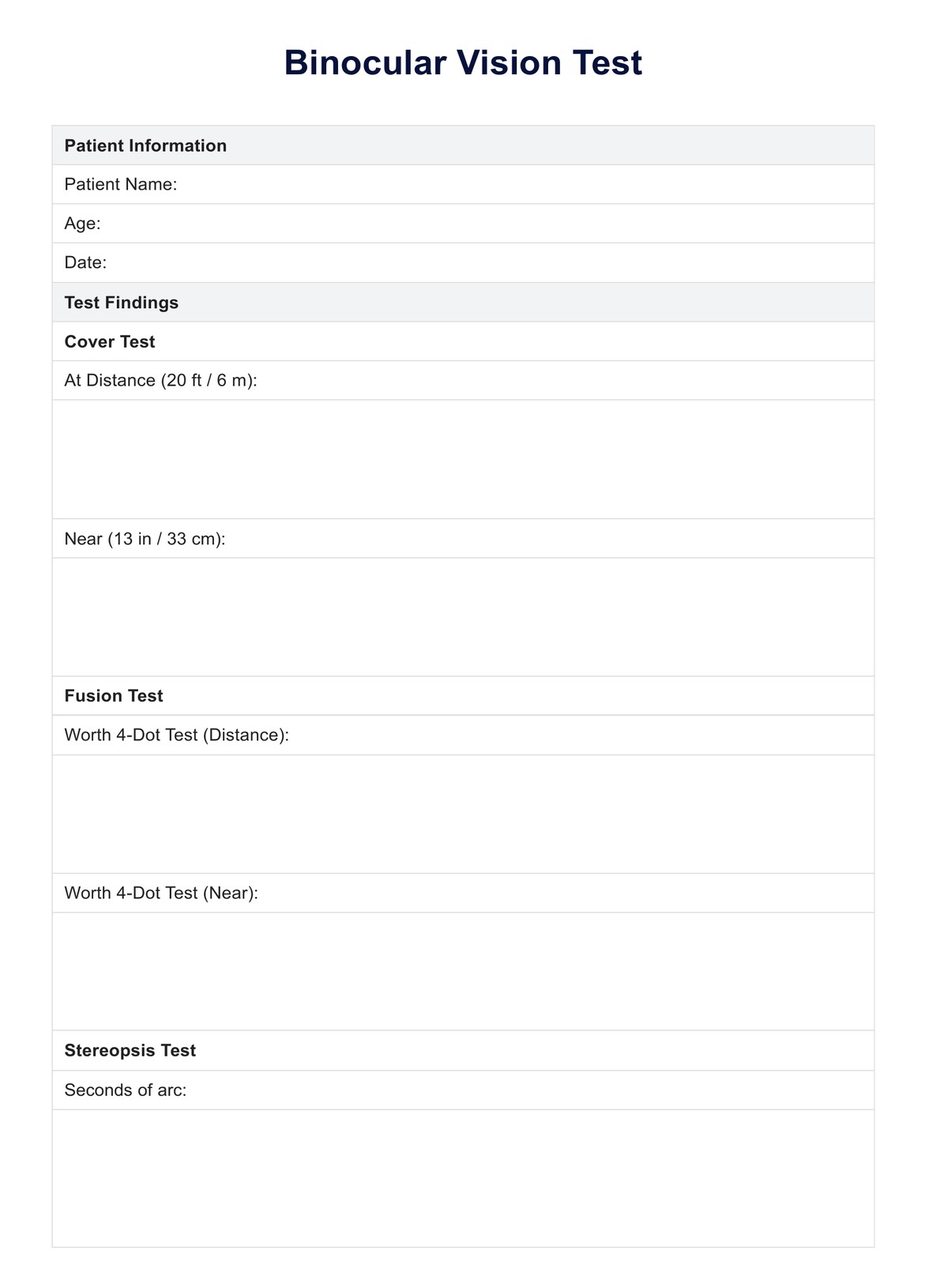The test for binocular vision typically involves a comprehensive examination that requires specialized equipment, instruments, and screening kits. It is done by an eye care professional, assessing factors like eye alignment, convergence, divergence, and depth perception.

Binocular Vision Test
Carepatron's free PDF download provides a binocular vision test example that you can use to assess your vision. Learn more about binocular vision and how to conduct the test effectively.
Binocular Vision Test Template
Commonly asked questions
Symptoms of binocular vision issues include double vision, eye strain, headaches, and difficulty focusing. If you experience these symptoms, consult with an eye care professional for a thorough examination to determine if you have binocular vision dysfunction.
While a professional assessment is recommended, a simple at-home test involves covering one eye at a time and observing if objects appear in their correct positions. If you notice discrepancies, it may indicate potential binocular vision issues, and you should seek professional evaluation.
EHR and practice management software
Get started for free
*No credit card required
Free
$0/usd
Unlimited clients
Telehealth
1GB of storage
Client portal text
Automated billing and online payments











